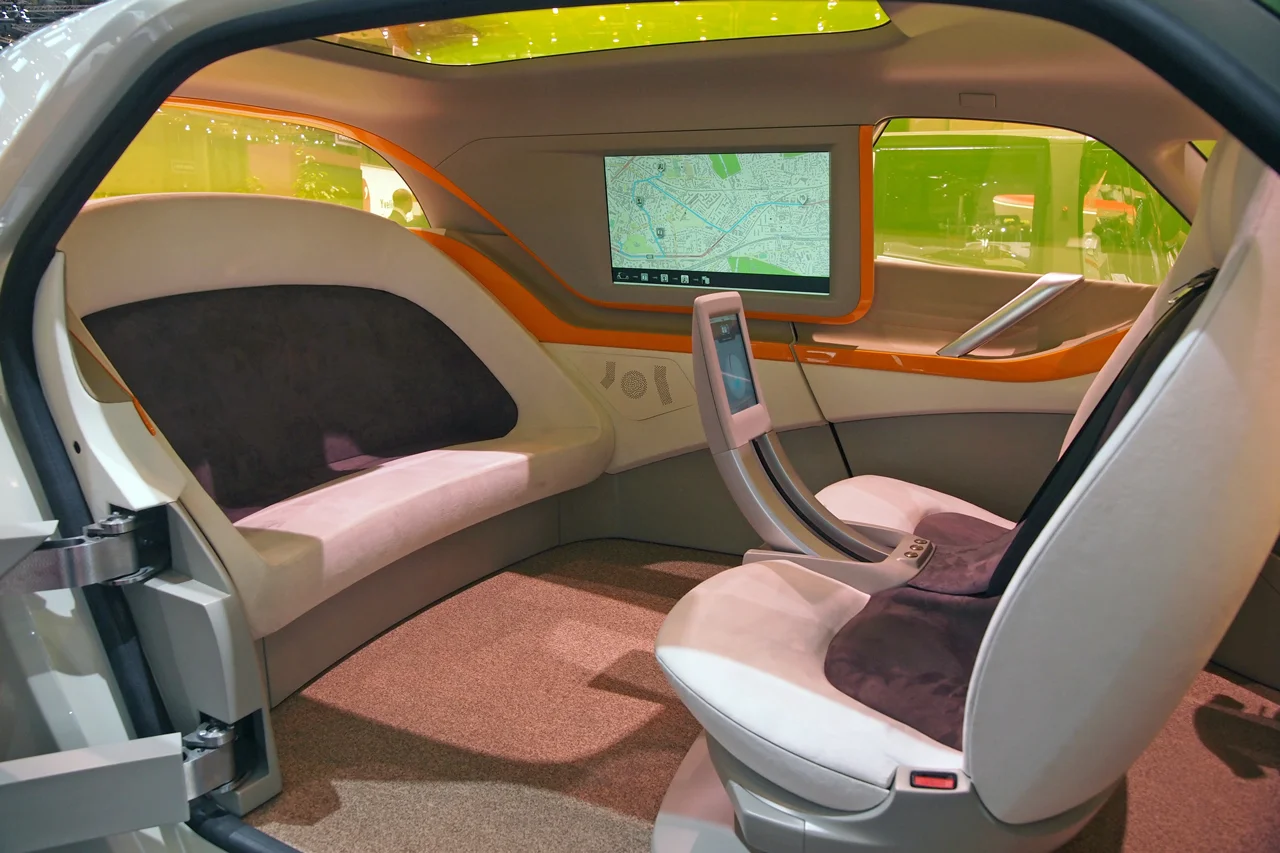The Lens
By TJ Martinell
Like other states, Washington will be confronted with a big question in coming years: how its surface transportation infrastructure will be transformed by driverless cars, and what role government should play.
Experts say that at scale, driverless vehicles can make better use of the current transportation infrastructure, reduce accidents and allow commuters to be productive while en route to work. For major metro regions like Seattle, with costly traffic congestion, the appeal is clear.
In a piece for the Wall Street Journal, Jerry Kaplan wrote that driverless cars could lead to “speedier commutes and commercial shipping, with far less pollution and energy use.” Kaplan is a fellow at the Center for Legal Informatics at Stanford University. A 2014 MIT analysis estimates the financial benefit to the U.S. could amount to $3 trillion per year.
However, others caution the benefits may not be seen for decades, until the technology is fully developed.
Future state and federal legislation could control the driverless technology available in vehicles sold to private individuals. Laws could also shape how ridesharing companies provide driverless vehicle services, and whether a legally licensed driver is required to be in the vehicle while it is operating.
Sen. Fain: Legislative Restraint Key
Sources say Washington should steer the course lightly.
State Sen. Joe Fain (R-47) called driverless vehicles “the most transformative technology of the 21st century.” Fain is the budget vice chair of the Senate Transportation Committee.
Fain told Lens the state should encourage companies developing driverless vehicle technology to operate in Washington, but at the same time, lawmakers need to “make sure we’re not prematurely putting in a regulatory scheme.”
“The last thing I want to do is put something on the books that will make it harder for development,” he said.
Paul Guppy is the vice president for research at Washington Policy Center. He told Lens that aside from ensuring public safety on the roads, government should resist the temptation to regulate the industry, said Guppy. “They (companies) have to figure out how to serve the customer,” he said. “When the government gets involved, it messes that up.”
Who Would Pay If There Are Special Infrastructure Needs?
Guppy added that if transportation infrastructure improvements are needed to accommodate driverless cars, the cost should be borne by those “who have chosen that new technology,” and not taxpayers.
Central Puget Sound proponents of self-driving cars include Bellevue real estate developer Kemper Freeman. He sees self-driving Uber vehicles as a future and more cost-effective alternative to costly transit systems, and as a means to reduce traffic congestion.
Currently there are no driverless cars commercially available. Google is working on a version with no pedals or steering wheel to be released to the public in 2020. The company has conducted testing in Washington on its private campus in Kirkland.
Nevada, California, Florida, Michigan, North Dakota, Tennessee, Arizona and Washington D.C. have passed laws or executive orders allowing limited use of driverless cars on public roads, for testing purposes.
The National Highway Traffic Safety Administration (NHTSA) defines autonomous vehicles in four levels from function-specific to full automation. Cars with an autopilot feature like that of Tesla fall somewhere in between. Tesla has stated their autopilot system is in a “public beta phase” and a licensed driver is still responsible for controlling the vehicle.
Florida Fatality Won’t ‘Slow Progress’
According to Forbes, a late June fatality in in Florida of a passenger using autopilot in a Tesla, while tragic, won’t “slow progress toward vehicle automation,” barring major legal fallout. It was the first Tesla autopilot crash after 130 million miles. Federal investigators recently reported the vehicle was going 74 miles per hour in a 65 mph zone.
In his WSJ article, Kaplan warns problems could occur trying to integrate driverless and human-operated vehicles on the same road system. He calls for separating them on the roads, and for upgraded traffic control systems to send and receive navigational information.
Mark Hallenbeck believes the initial impact of driverless vehicles on the road system when they appear in the next five to 10 years will be “invisible” because there will be so few of them. Hallenbeck is the director of the Washington State Transportation Center (TRAC) at the University of Washington.
Devil Is In The Details
Hallenbeck told Lens he is skeptical about the idea of separating automated vehicles from human operated vehicles on roads to mitigate conflicts. Kaplan recommends assigning driverless vehicles to high occupancy vehicle (HOV) lanes. However, Hallenbeck warns that this could result in massive congestion issues at the entry-exit points between HOV and general purpose lanes.
It might be even worse if the HOV lanes have more vehicles than usual due to the ability of driverless cars to make better use of existing road capacity. Humans “can’t deal with that level of vehicle interaction,” he said.
“You don’t get capacity improvements until the number of (driverless) cars” on the road “is enormous,” he said.
Driverless cars can also have trouble making decisions in in situations where a crash is inevitable, and where interpreting the behavior of a human driver is critical.
Because of that, driverless vehicles will operate at first in designated areas with controlled environments, said Hallenbeck. Guppy envisions a transitory phase as the technology progresses, in which more driverless options are made available in cars but a person is still legally responsible for reassuming control when needed.
Insurance companies will be a big player, crafting policy for driverless vehicle liability coverage. Those policies could restrict coverage or set it at such a high rate that only companies and the wealthy can afford to own them.

